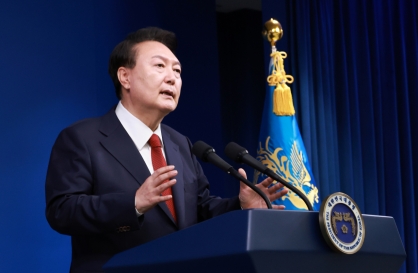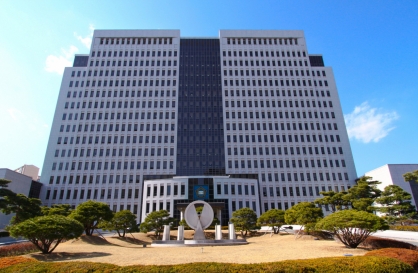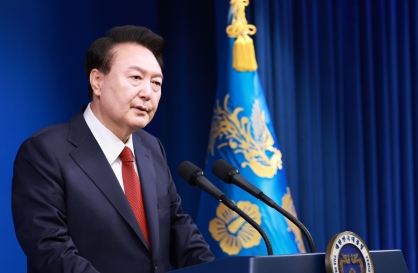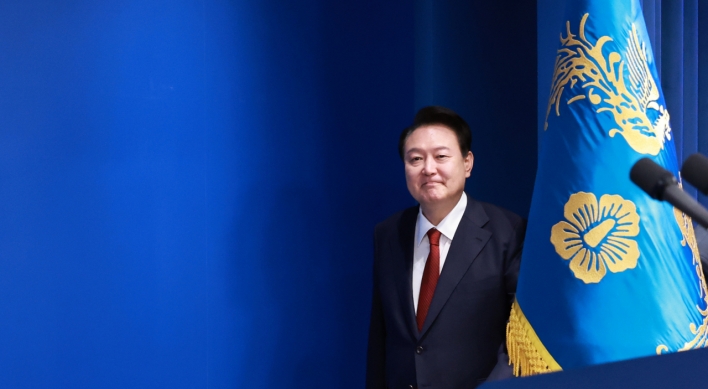[Kim Seong-kon] Somewhere between Constantinople and Istanbul
By Yu Kun-haPublished : April 2, 2013 - 19:41
Today, Istanbul is a city of Muslims. Before the mid-15th century, however, it was a Christian city of the Byzantine Empire called Constantinople. In 1453, Constantinople was conquered by Sultan Mehmed II of the Ottoman Turk Empire, signaling the end of Christianity and Western civilization in the glorious city. Later, the city was renamed Istanbul by the Turks. Ever since, Istanbul has become a curiously fascinating city where the East and the West, Islam and Christianity, and tradition and innovation meet and clash.

In his celebrated novel, “My Name is Red,” Orhan Pamuk, the Turkish Nobel Laureate, explores the themes of clashes between the East and the West, the young and the old, and conservatism and radicalism. The confrontation between the stubborn defenders of tradition and the self-righteous innovators ultimately results in bigotry, hatred and murder. As Pamuk aptly perceives in his novel, the inevitable outcome of such uncompromising conflict is degradation of humanity and annihilation of human civilization.
In his famous poem, “Sailing to Byzantium” W. B. Yates adores Byzantium as a Utopian place where “unaging intellect” and immortal art prevail. The poem, which is a spiritual journey of the poet into his vision of eternal life and art, begins with the following line: “That is no country for old men. The Young/ In one another’s arms, birds in the trees/ ― Those dying generations ― at their song.” Writing this poem when he was 60, the poet vividly delineates the agony of old age, and decides to leave the country of the young to travel to Byzantium, a place of sages and perfection where he can find true human spirit and immortal art.
More recently, a Korean author named Kim Hyong-o authored an intriguing book entitled “The Sultan and The Emperor.” A graduate of Seoul National University with a degree in international relations, and a former National Assembly speaker, Kim has crafted a splendid book on the last days of Constantinople after spending four years collecting materials, visiting historic sites in Istanbul and interviewing various Turkish scholars. The detailed footnotes and the voluminous appendix reveal the author’s hard work and erudite knowledge about what actually happened in 1453 in Constantinople.
In this monumental book, the author adopts a unique narrative technique employing three narrators the Sultan, the Emperor and the author creatively covering vast cultural, spatial and time differences. In his preface, Kim writes that he time-traveled to the 15th century to write the book. Nevertheless, the author, while exploring the distant past, provides a splendid 21st-century perspective throughout the book. In “The Sultan and the Emperor,” therefore, the reader can hear different voices: the Western/Christian voice and the Eastern/Muslim voice, which sometimes collide with each other, but other times harmoniously coexist. And at the end of the book, the author provides a third voice, incorporating and embracing the two radically different narratives.
Aside from its astonishing merits, Kim’s book is significant because of his keen perception of reconciliation that has occurred in Istanbul; the East and the West; Islam and Christianity; and conservatism and progressivism. It is in this sense that Kim coins a word, “Istantinople,” where the two antagonizing forces serenely coexist. Indeed, what city could be better than Istanbul when it comes to merging and reconciling two different worlds?
While writing the book on Constantinople and Istanbul, the author, as a politician, perhaps had in mind the lamentable situation of the Korean Peninsula. In Korea, we are still divided into polarized camps: communists and capitalists, progressives and conservatives, Left and Right, and those upholding tradition and those for the new. And we hate each other and fight like archenemies. Why can we not create a place like Istantinople where the two antagonizing and mutually exclusive forces peacefully coexist?
Director Ang Lee’s recent movie, “Life of Pi,” too, presents an important message: We must avoid antagonism and reconcile with “the other.” In the beginning of the movie based on Yann Martel’s Man Booker Prize-winning novel, Pi embraces Hinduism, Catholicism and Islam, three conflicting religions. Then after being shipwrecked, Pi is cast away in the rough sea with a ferocious Bengal tiger named Richard Parker. Through his ordeal in the perilous sea for 227 days, Pi learns the survival skills of living and coping with a hostile enemy. He learns that even though the tiger is formidable, it ironically gives him the strength to hang on. Living with the threatening tiger, Pi realizes the importance of both spirituality and practicality. Similar to “The Sultan and the Emperor,” “Life of Pi,” too, adopts a narrative structure of two voices: the voice of Pi in a flashback, and the voice of the author who is interviewing Pi.
In order to survive and even thrive as an advanced country, we should put an end to chronic ideological warfare and seek reconciliation instead. We need to turn our beloved country into “Istantinople,” a place where we can embrace the other despite ideological differences, putting down our age-old grudges, blind hatred and ideological confrontations once and for all.
By Kim Seong-kon
Kim Seong-kon is a professor of English at Seoul National University and president of the Literature Translation Institute of Korea. He can be reached at sukim@snu.ac.kr. ― Ed.

In his celebrated novel, “My Name is Red,” Orhan Pamuk, the Turkish Nobel Laureate, explores the themes of clashes between the East and the West, the young and the old, and conservatism and radicalism. The confrontation between the stubborn defenders of tradition and the self-righteous innovators ultimately results in bigotry, hatred and murder. As Pamuk aptly perceives in his novel, the inevitable outcome of such uncompromising conflict is degradation of humanity and annihilation of human civilization.
In his famous poem, “Sailing to Byzantium” W. B. Yates adores Byzantium as a Utopian place where “unaging intellect” and immortal art prevail. The poem, which is a spiritual journey of the poet into his vision of eternal life and art, begins with the following line: “That is no country for old men. The Young/ In one another’s arms, birds in the trees/ ― Those dying generations ― at their song.” Writing this poem when he was 60, the poet vividly delineates the agony of old age, and decides to leave the country of the young to travel to Byzantium, a place of sages and perfection where he can find true human spirit and immortal art.
More recently, a Korean author named Kim Hyong-o authored an intriguing book entitled “The Sultan and The Emperor.” A graduate of Seoul National University with a degree in international relations, and a former National Assembly speaker, Kim has crafted a splendid book on the last days of Constantinople after spending four years collecting materials, visiting historic sites in Istanbul and interviewing various Turkish scholars. The detailed footnotes and the voluminous appendix reveal the author’s hard work and erudite knowledge about what actually happened in 1453 in Constantinople.
In this monumental book, the author adopts a unique narrative technique employing three narrators the Sultan, the Emperor and the author creatively covering vast cultural, spatial and time differences. In his preface, Kim writes that he time-traveled to the 15th century to write the book. Nevertheless, the author, while exploring the distant past, provides a splendid 21st-century perspective throughout the book. In “The Sultan and the Emperor,” therefore, the reader can hear different voices: the Western/Christian voice and the Eastern/Muslim voice, which sometimes collide with each other, but other times harmoniously coexist. And at the end of the book, the author provides a third voice, incorporating and embracing the two radically different narratives.
Aside from its astonishing merits, Kim’s book is significant because of his keen perception of reconciliation that has occurred in Istanbul; the East and the West; Islam and Christianity; and conservatism and progressivism. It is in this sense that Kim coins a word, “Istantinople,” where the two antagonizing forces serenely coexist. Indeed, what city could be better than Istanbul when it comes to merging and reconciling two different worlds?
While writing the book on Constantinople and Istanbul, the author, as a politician, perhaps had in mind the lamentable situation of the Korean Peninsula. In Korea, we are still divided into polarized camps: communists and capitalists, progressives and conservatives, Left and Right, and those upholding tradition and those for the new. And we hate each other and fight like archenemies. Why can we not create a place like Istantinople where the two antagonizing and mutually exclusive forces peacefully coexist?
Director Ang Lee’s recent movie, “Life of Pi,” too, presents an important message: We must avoid antagonism and reconcile with “the other.” In the beginning of the movie based on Yann Martel’s Man Booker Prize-winning novel, Pi embraces Hinduism, Catholicism and Islam, three conflicting religions. Then after being shipwrecked, Pi is cast away in the rough sea with a ferocious Bengal tiger named Richard Parker. Through his ordeal in the perilous sea for 227 days, Pi learns the survival skills of living and coping with a hostile enemy. He learns that even though the tiger is formidable, it ironically gives him the strength to hang on. Living with the threatening tiger, Pi realizes the importance of both spirituality and practicality. Similar to “The Sultan and the Emperor,” “Life of Pi,” too, adopts a narrative structure of two voices: the voice of Pi in a flashback, and the voice of the author who is interviewing Pi.
In order to survive and even thrive as an advanced country, we should put an end to chronic ideological warfare and seek reconciliation instead. We need to turn our beloved country into “Istantinople,” a place where we can embrace the other despite ideological differences, putting down our age-old grudges, blind hatred and ideological confrontations once and for all.
By Kim Seong-kon
Kim Seong-kon is a professor of English at Seoul National University and president of the Literature Translation Institute of Korea. He can be reached at sukim@snu.ac.kr. ― Ed.





![[K-pop’s dilemma] Can K-pop break free from ‘fandom’ model?](http://res.heraldm.com/phpwas/restmb_idxmake.php?idx=644&simg=/content/image/2024/05/09/20240509050541_0.jpg&u=20240509173751)




![[News Analysis] Yoon's first 2 years marked by intense confrontations, lack of leadership](http://res.heraldm.com/phpwas/restmb_idxmake.php?idx=644&simg=/content/image/2024/05/09/20240509050612_0.jpg&u=20240509233252)







![[Today’s K-pop] NCT’s Mark to drop 1st solo album in February 2025](http://res.heraldm.com/phpwas/restmb_idxmake.php?idx=642&simg=/content/image/2024/05/10/20240510050597_0.jpg&u=)